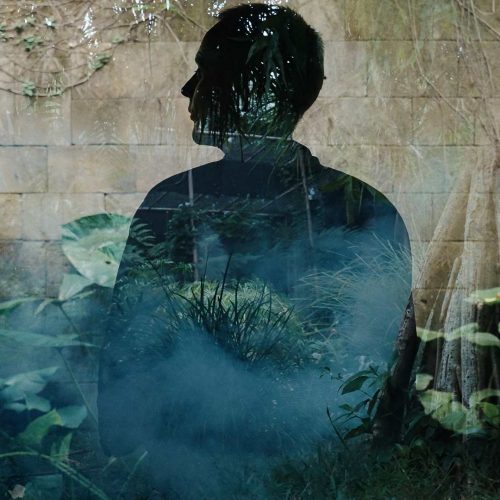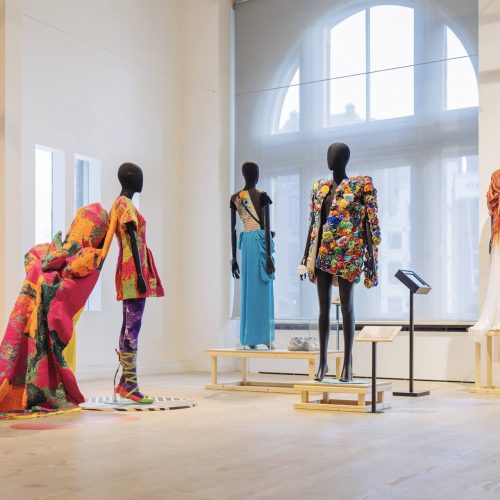Revolutionary Sustainable Textiles for the Modern Home | Heimtextil 2020
Could today’s waste be tomorrow’s raw material? Could human and agricultural waste be explored as an abundant material resource? Can we harvest naturally abundant materials in more agile and inventive ways? Last Edition of Heimtextil offered us all the answers, surprising us with extremely revolutionary sustainable new materials and products to be used for the interior designers and architects of the future. Get to know them.
There is no better way to start the year than to lose yourself among the thousands of homes that are comprised within the commercial offer of Heimtextil, the most important international home textiles and interior design fair in the world. In our tireless search for trends and sustainable products, it is a “must” to understand how the home of the new decade will be. The organizers delighted us with a long program of conferences, panel talks and tours in which the word “sustainability” was the leitmotif of everything that wants to be modern.
The panel discussion ‘Securing the future of the next generations – sustainable strategies for manufacturers and retailers’ was one of the highlights of the four-day programme. It presented practical examples from Lenzing, Vossen and IKEA and introduced the new state-run ‘Grüner Knopf’ textile seal and the global Sustainable Development Goals of the United Nations to the interested trade audience.
It is a reality. Whether start-up or traditional company, no manufacturer will be able to avoid environmentally friendly materials and production processes in 2020. Yes. Sustainability is the major overarching theme of the industry. At Heimtextil 2020, green aspects were at the top of the fair’s agenda. The event is promoting the industry's commitment to sustainability and giving green pioneers a platform. The tenth edition of the Green Directory, the exhibitor directory for sustainable producers, included more pioneers and newcomers than ever before with 259 companies. The ‘Green Village’ was also enjoying growth. In the sustainability area in hall 12.0, which acts as a first port of call for all questions relating to green issues, recognised certifiers and seal awarders presented themselves. Yes. Even big names are placing value on textiles made of certified materials and avoiding plastic packaging. For example, the Krefeld-based company Deco Design Fürus with its OceanSafe brand is one of the pioneers in the field of recycling management.
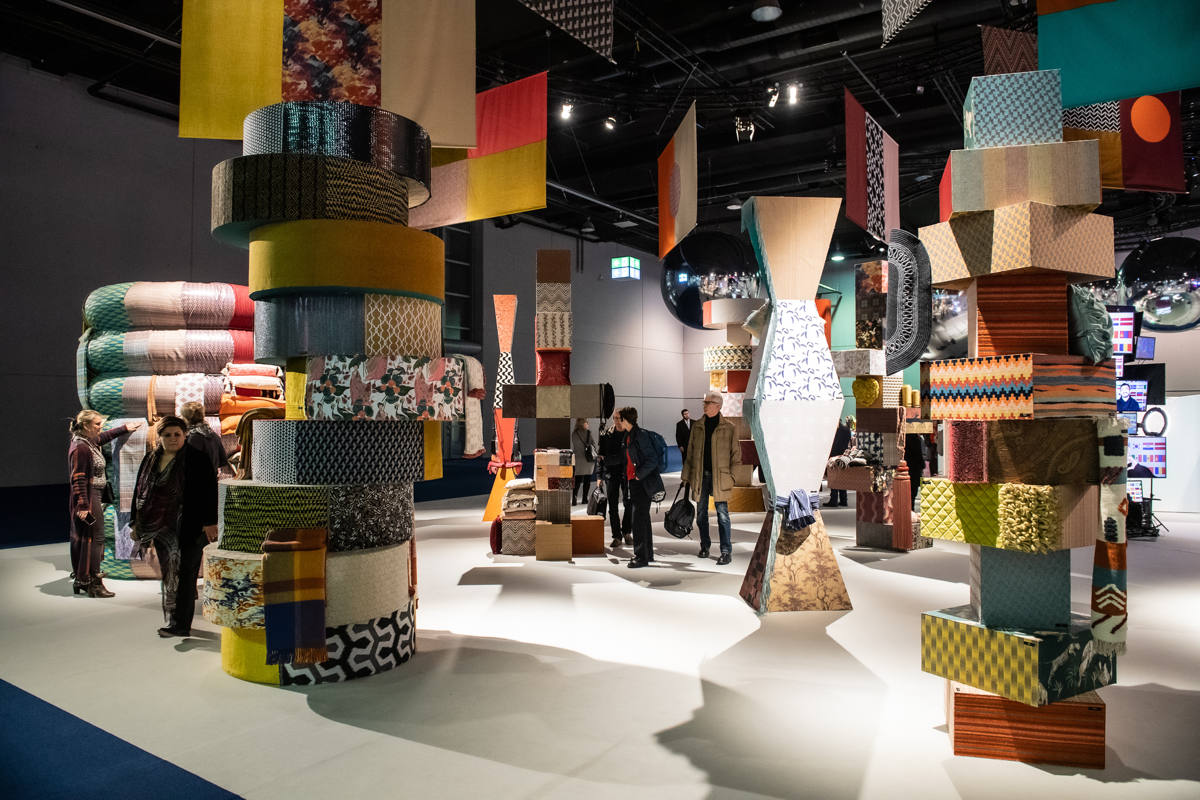
Trends Spaces. © Messe Frankfurt
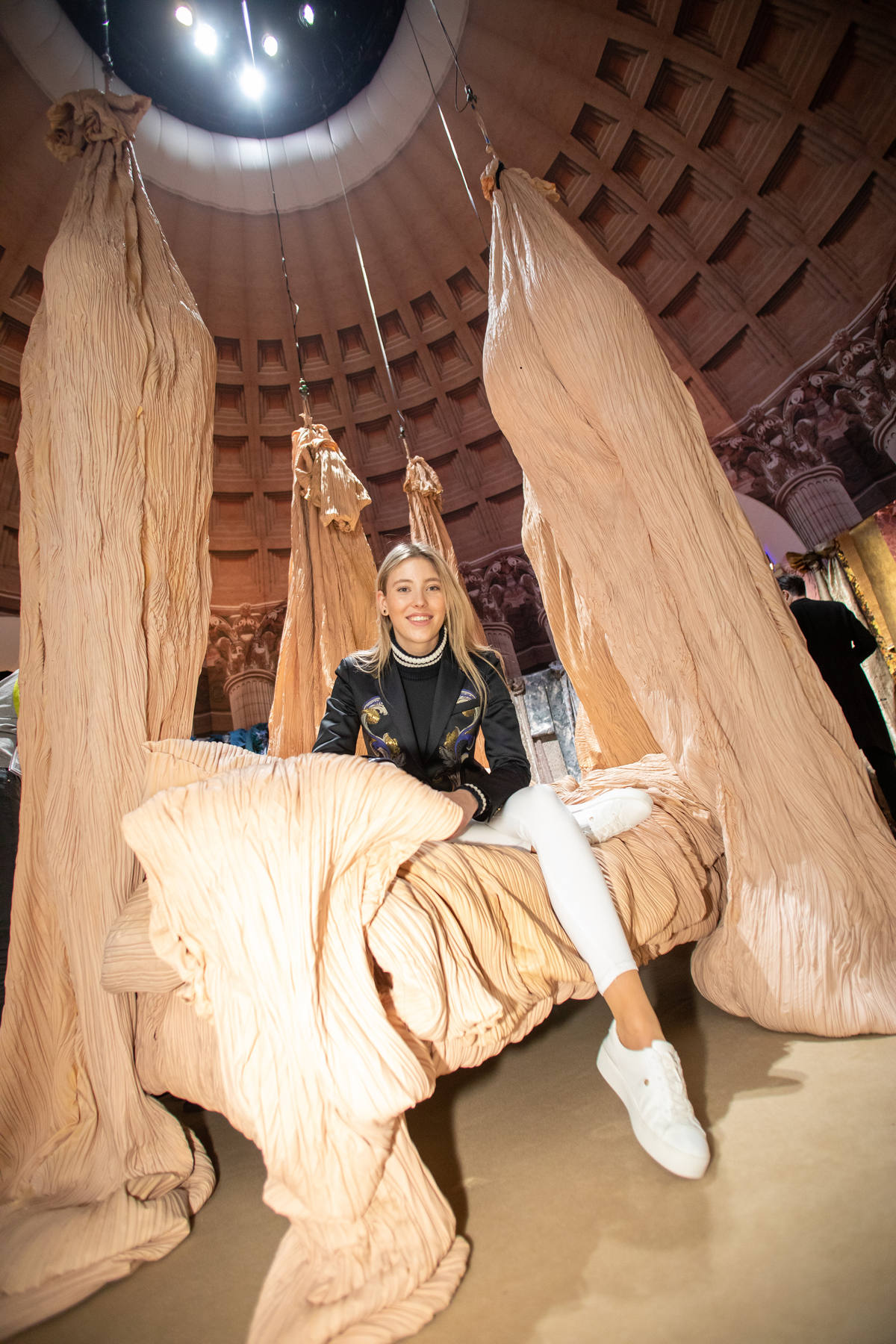
Trends Spaces. © Messe Frankfurt
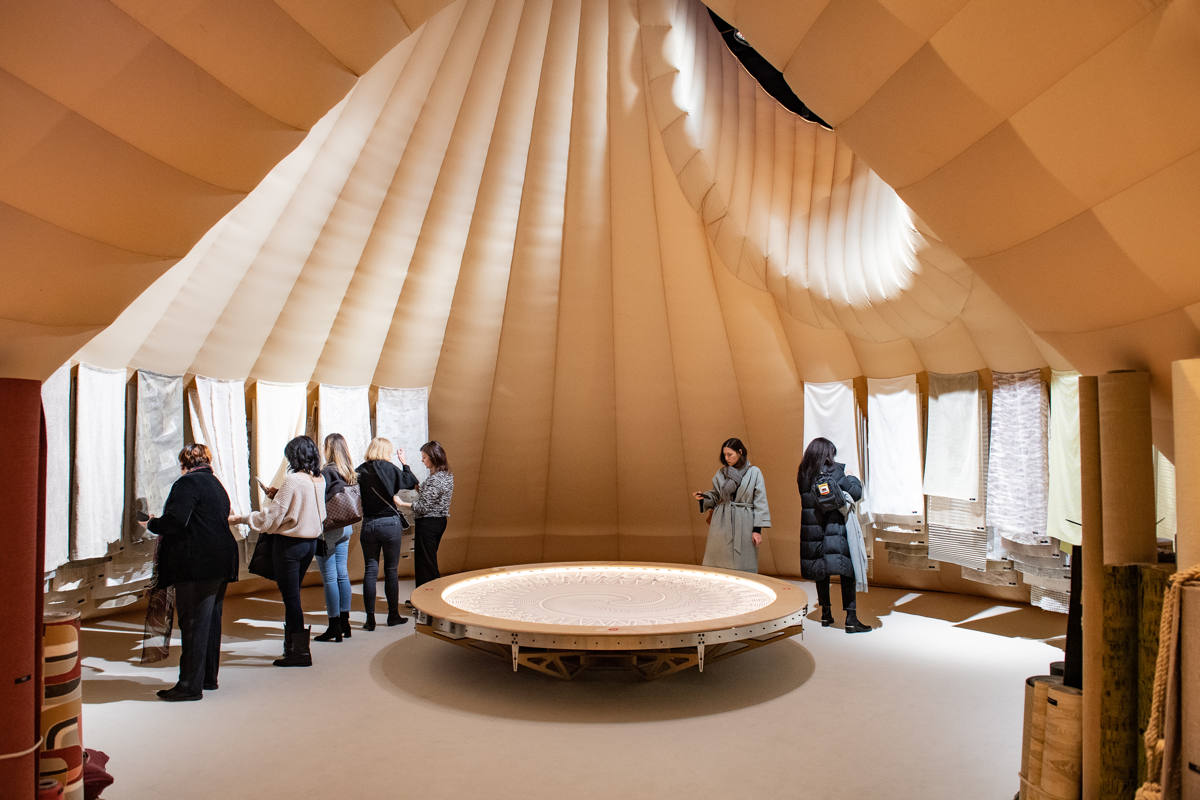
Trends Spaces. © Messe Frankfurt
Trends Spaces: all about sustainability
Our first stop was undoubtedly Trends Spaces, the exhibition that the fair organizes every year to inspire interior designers, press and architects about the trends that our homes, hotels and stores will become seasoned with in the coming years.
Sustainable aspects were also at the forefront of the concept for this year’s ‘Trend Spaces’. ‘Together with our designers, we have set ourselves the goal of creating a sustainable show and have adopted a material manifesto for this purpose. The aim was to minimise the environmental impact by selecting materials in an intelligent way. This means: wherever possible, alternative, sustainable materials were used’, explained Olaf Schmidt, Vice President Textiles & Textile Technologies of Messe Frankfurt.
Indeed, this design show showed that not only talks about sustainability but also embraced it in practical terms. With the motto “Where I Belong”, visitors interested in design could experience around 1000 exhibits by international exhibitors integrated into a spectacular design concept by Stijlinstituut Amsterdam under the direction of Anne Marie Commandeur. The approach of the new Future Materials Library, part of the Trend Space, was also progressive and sustainable. Here, visitors could explore the nature and production method of innovative materials.
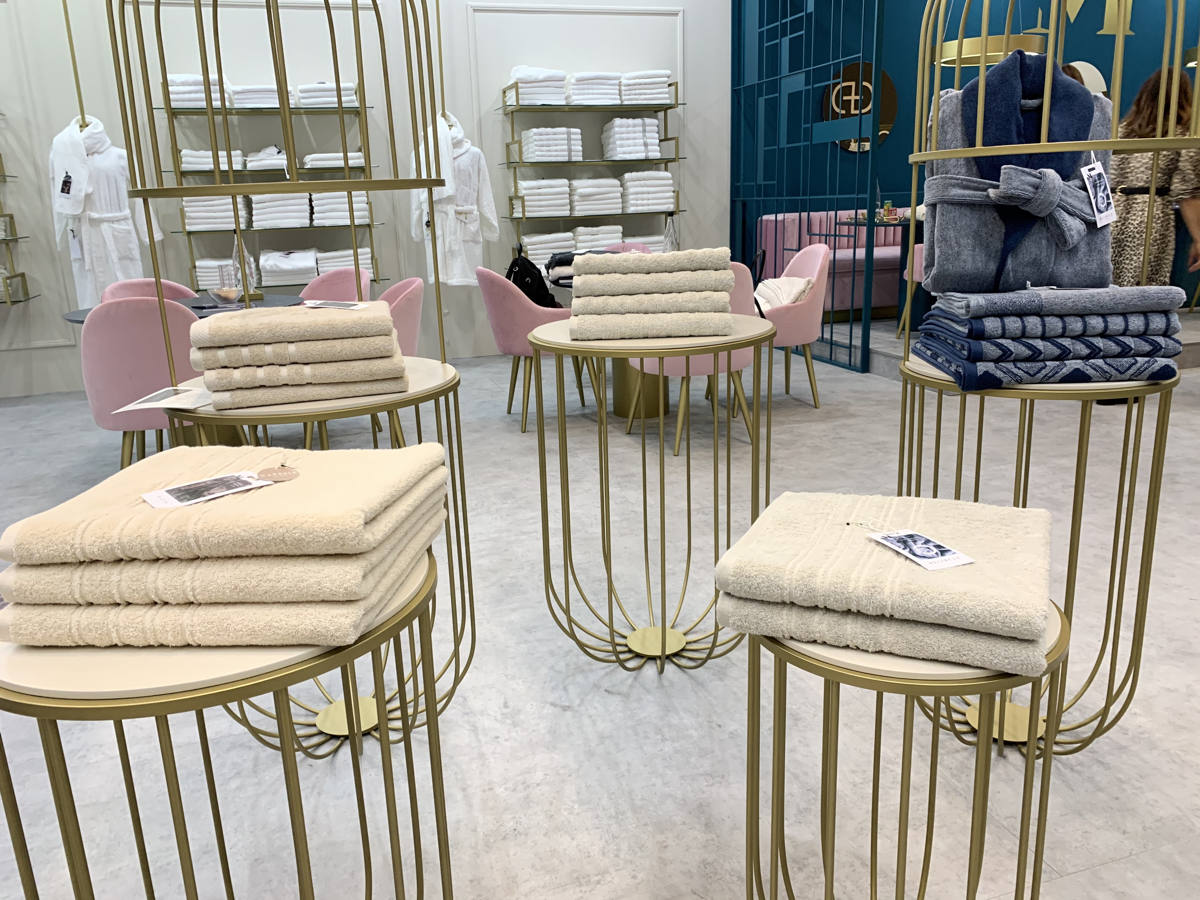
Eco-Friendly Hemp Towels and Kapok towels by MundoTextil, Portugal.
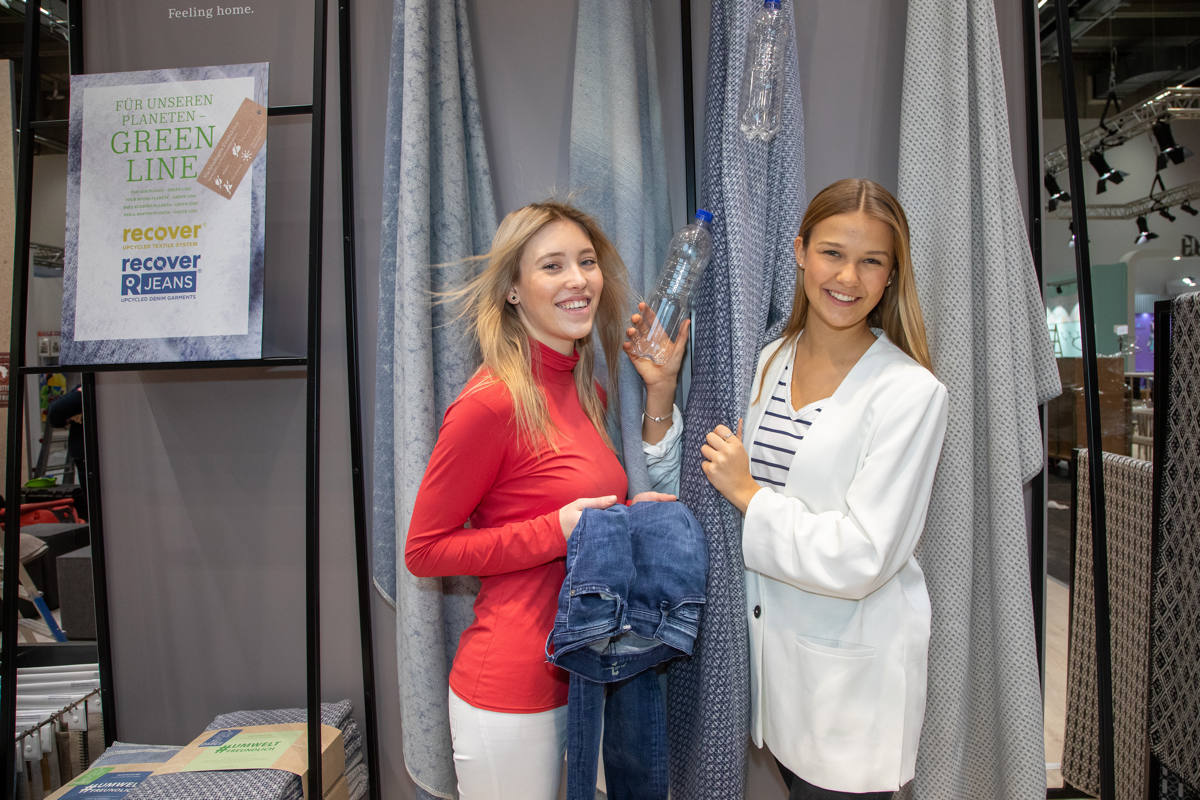
Curtains made of recycled jeans and PET bottles by Zorluteks. © Messe Frankfurt
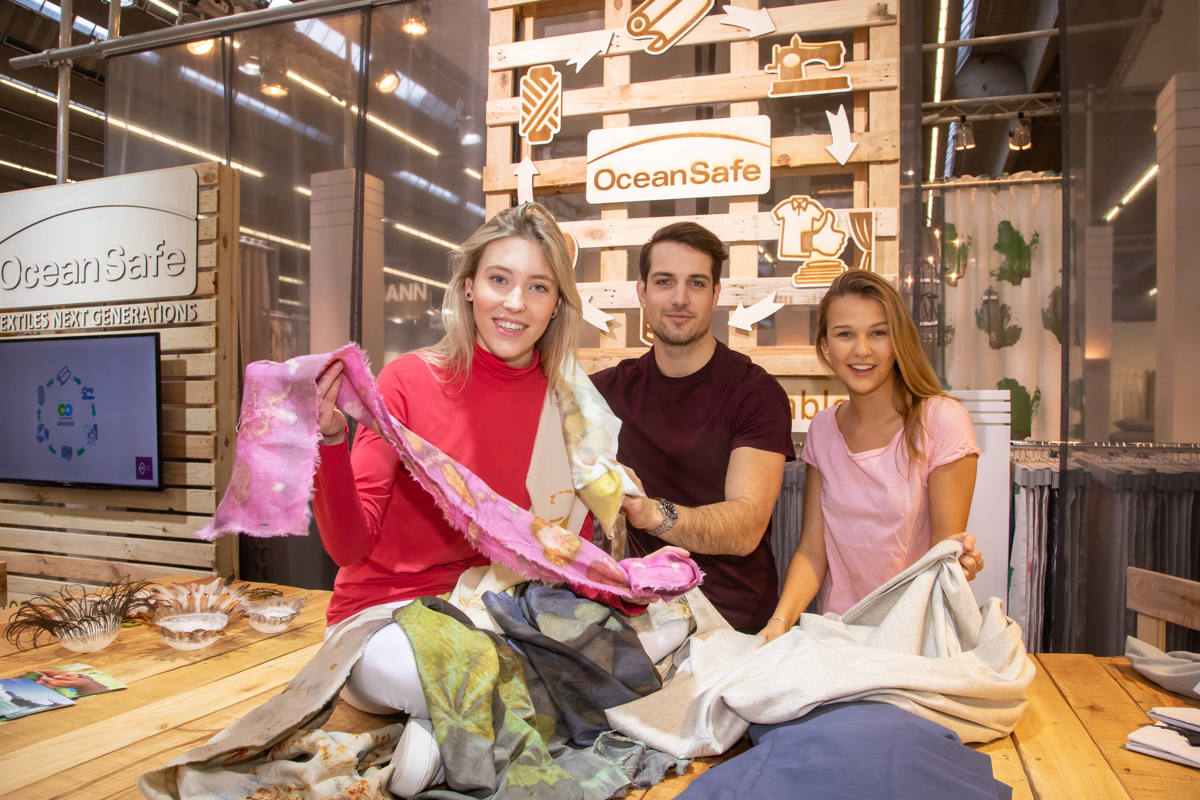
OceanSafe. © Messe Frankfurt
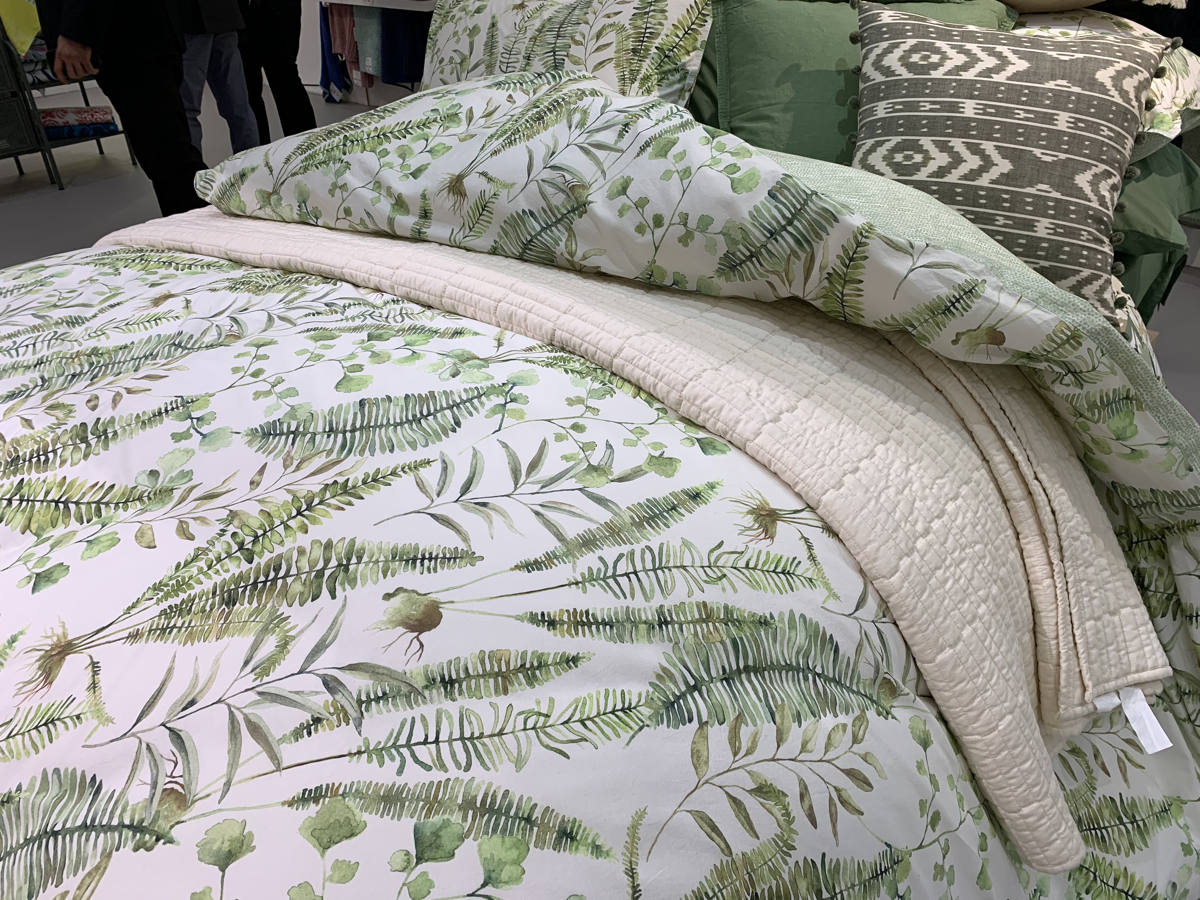
Recology Linen Collection by Welspun.
Recycled Materials for progressive homes
Overconsumption of scarce natural resources is driving Designers to rethink and reclaim waste materials in intelligent and sensitive ways. As well as offering environmental benefits, these innovations signal a shift in our relationship with materials and a reinterpretation of value. From single-use plastics to textile offcuts and pre-loved clothing, Designers are intercepting industrial and domestic waste streams beforw they reach landfill, and haversting these alternative raw materials to create useful and desirable products.
- Eileen Fisher, founder of the International clothing brand that bears her name, launched a take-back programme in 2009 that values discarded clothes whatever their condition. Donated garments that are beyond repair are passed to the company’s Waste No More experimental design Studio, where creative director an artista Sigi Ahl transforms them into unique artworks and soft Furnishings. The fabrics are reworked using felting technique that requires no water and very little energy. The resulting pieces are all unique; some clearly feature damaged garments telling the story of their past, other are more abstract compositions, ana all are highly desirable.
- British designer Christopher Raeburn has long been known for his championing of sustainability and his Raemade collections transform materials destined to landfill into highly covetable new clothing. The Raemade Off-Cut Insulation Puffa featured in Heimtextil is a prime example of his upcycling expertise. It is a limited Edition.
- Sophie Rowley repurposes discarded jeans and denim offcuts - and takes them in an entirely new direction. Layers of salvaged textiles are bonded using water – based epoxi. Once the resulting slabs of Bahia Denim have dried and hardened, they can be cu tinto various shapes and used to make pieces such as tables and stools. The cut surfaces resemble marble.
- Recy Leather, available in a variety of finishes including saffiano and calf, is made mainly of offcuts from the glove industry, shredded and bound together with natural rubber to form large sheets,. It is certified as 100% recycled.
- Circular Fibres, by Charlotte Cazals. She aims to show that end-of-life fabrica has far more potencial. The 100% recycled cotton/poliéster textiles in her Circular Fibres range, finely quilted for durability and embellished with colourful embroidery, are beautiful as well as environmentally friendly, and are intended for a range of uses, including upholstery, wall hangings and blankets.
- Small Plastics takes everyday plastic waste and transform it into beautiful handmade panels with multiple uses. The process allows bespoke patterning and appealingly bright colour combinations to make various ítems: table tops, shelving, bathroom panels, jewellery, cabinets and signage are just a few examples.
- Paper Factor works by hand with cellulose pulp and tints it with natural pigments before it is pressed into digitally designed moulds. The resulting strong, light, durable “micro-paper” can be used as a wall covering.
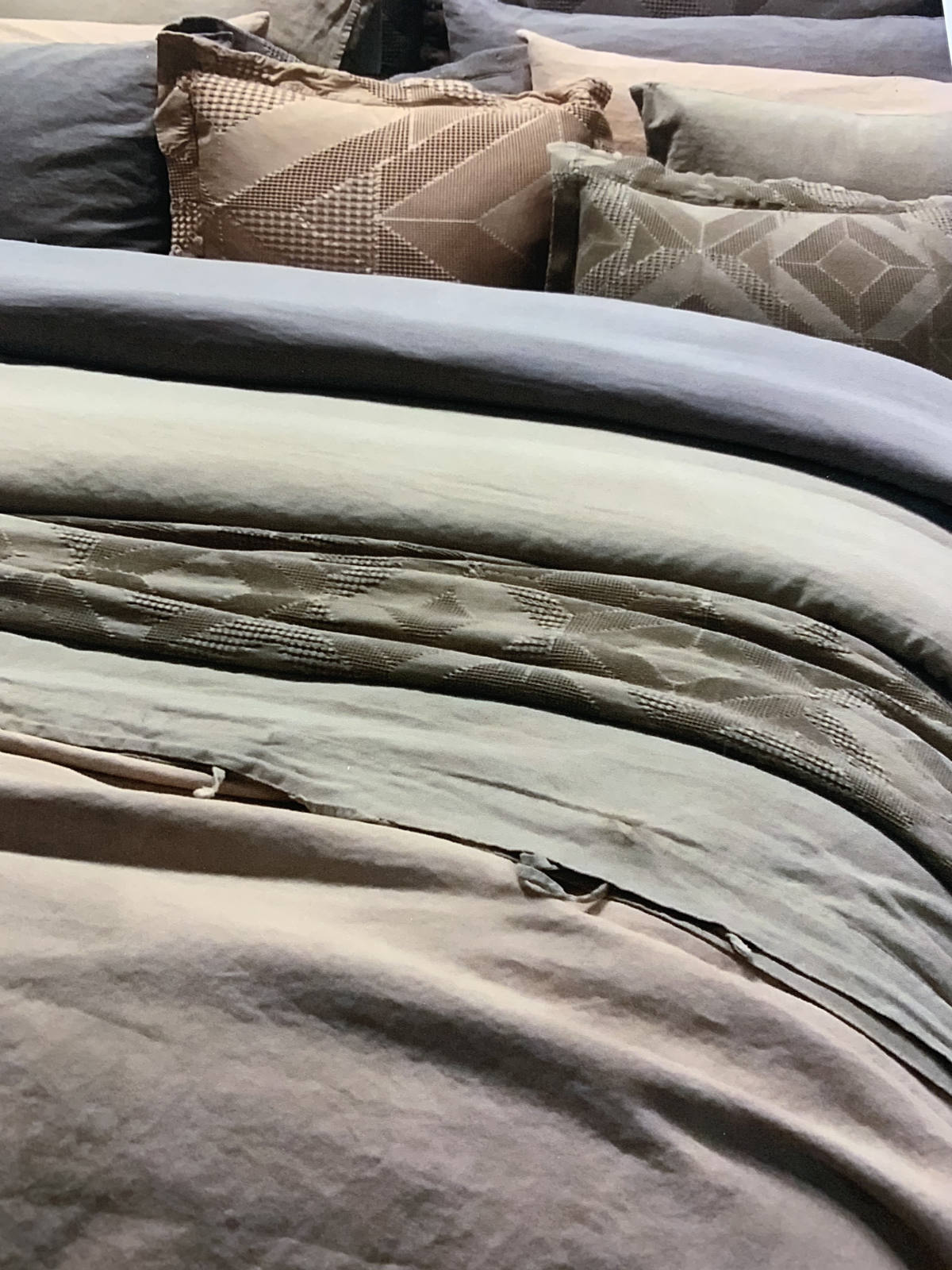
Linen Collection dyed with minerals by Lasa.
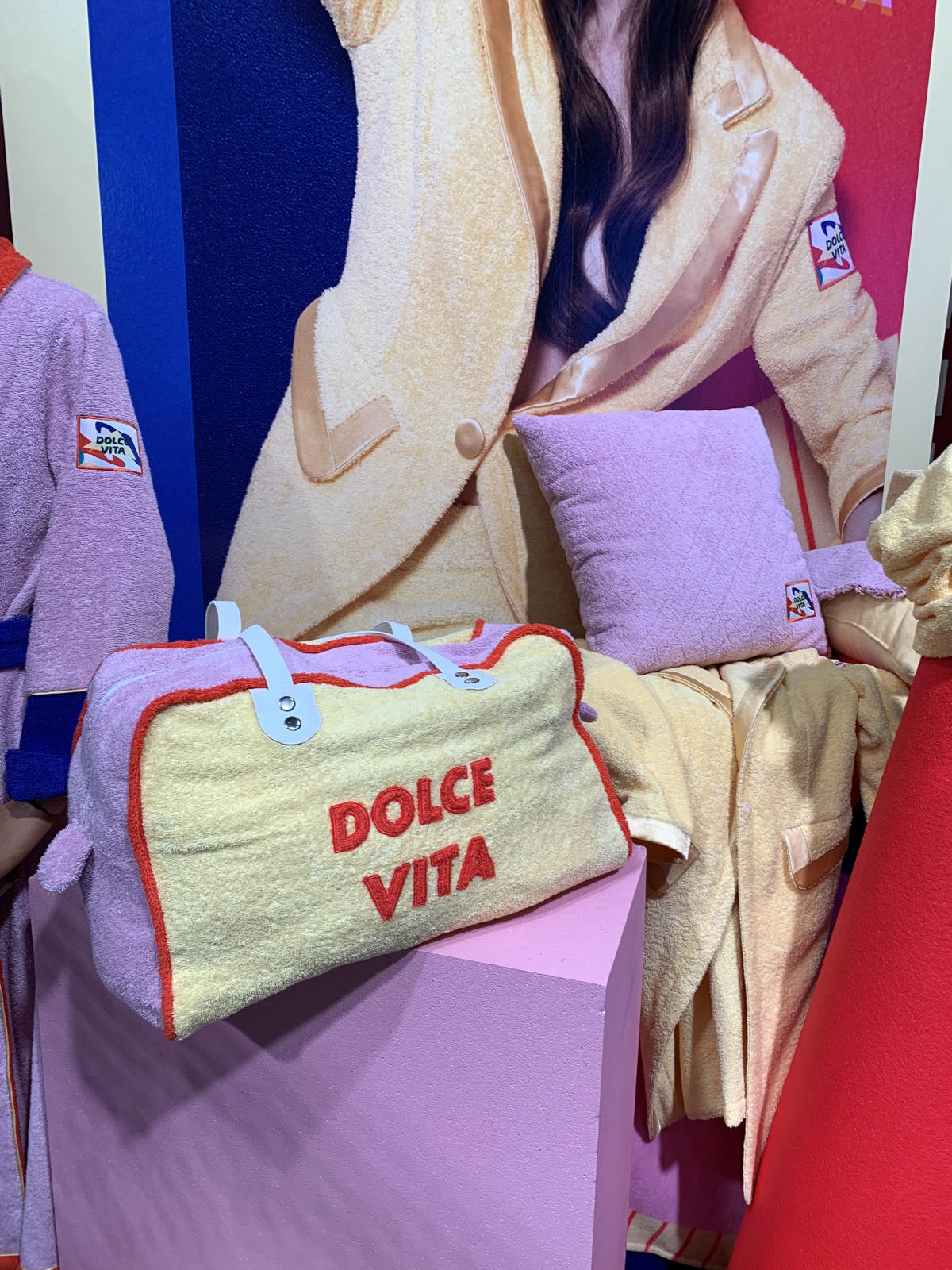
Vossen launched its firs Vegan Towels Collection.
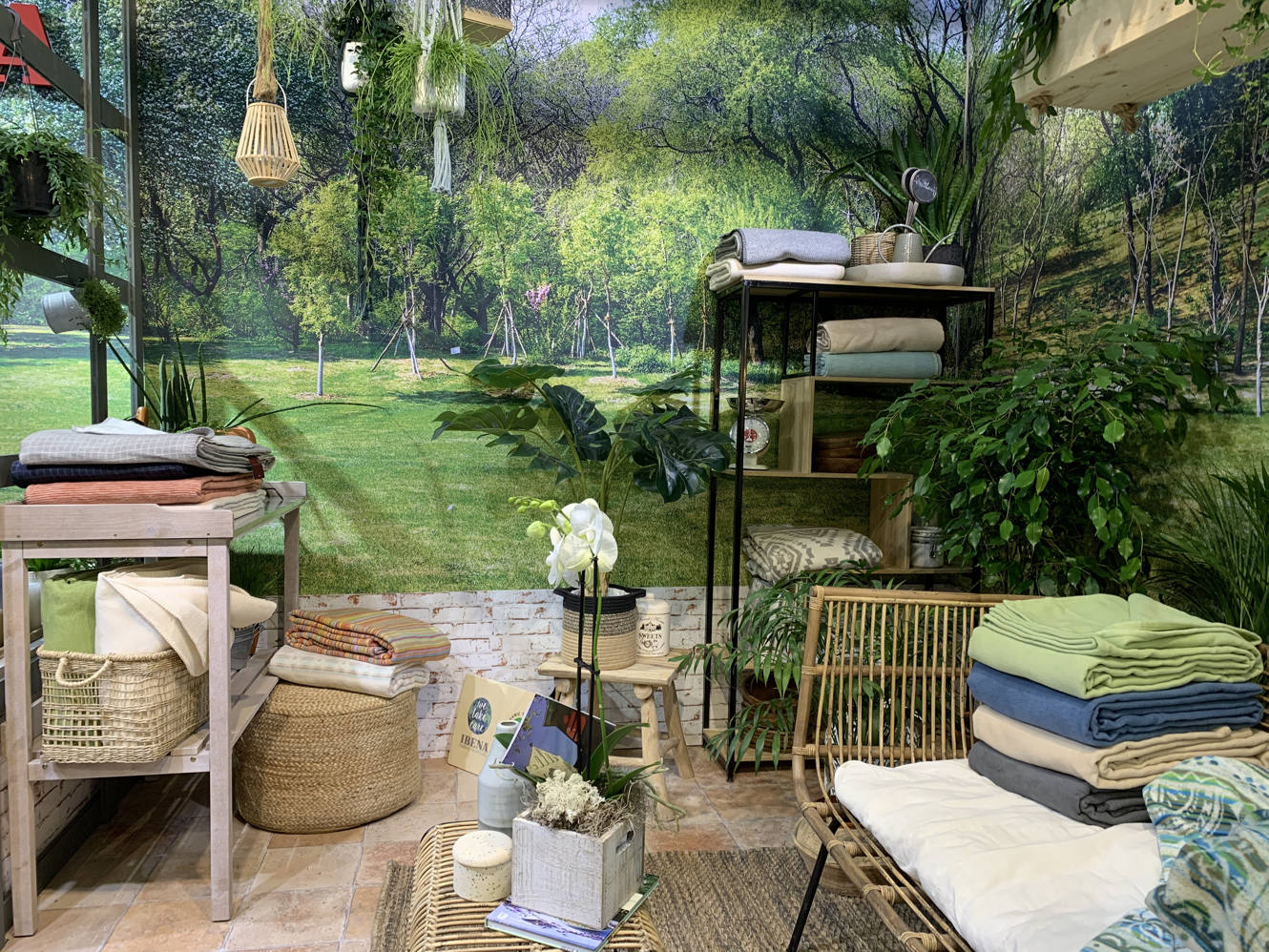
Organic cotton collections by Ibena. 100% Bio Cotton.
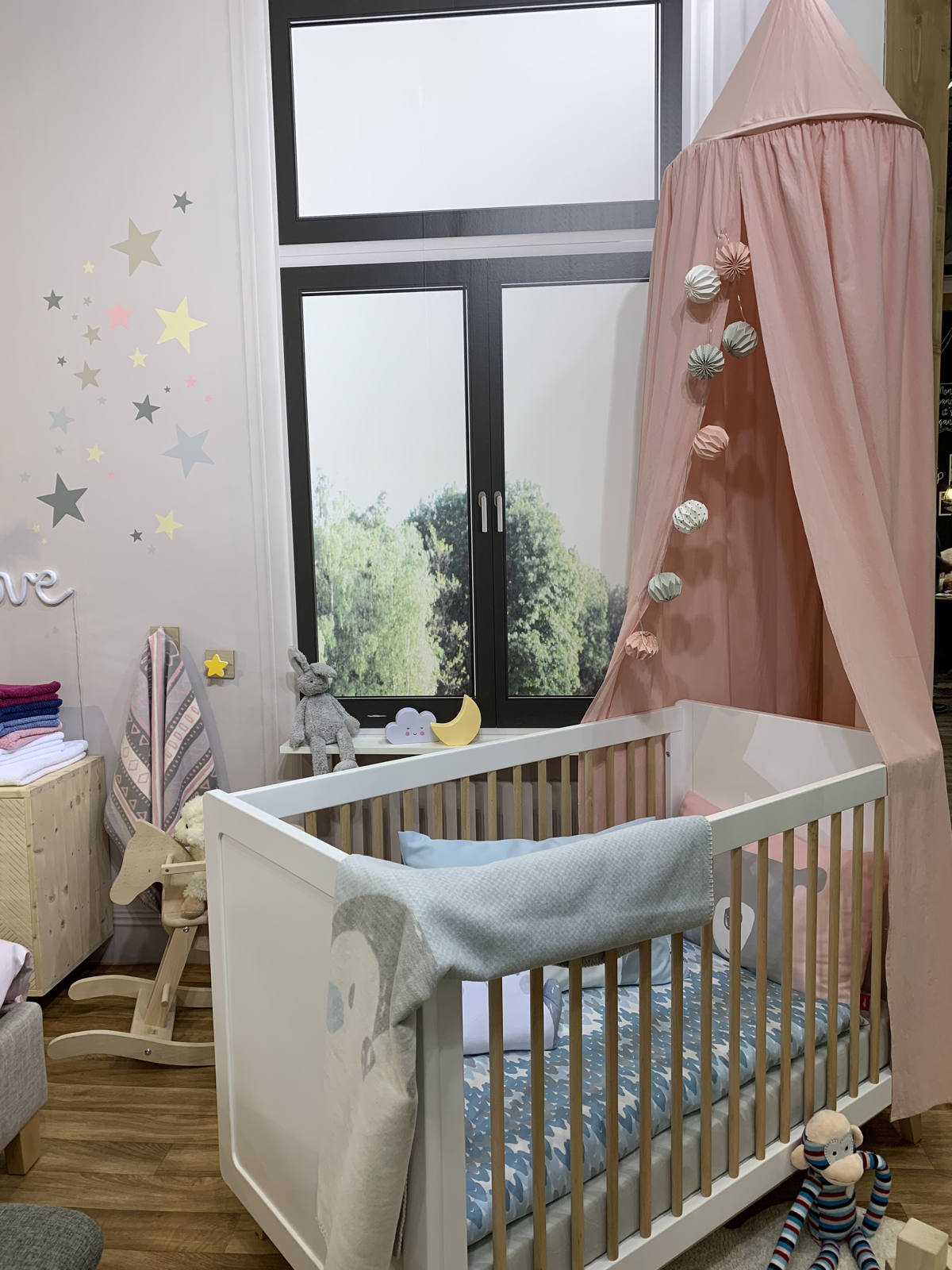
Biological Byproducts
With the world’s population expected to exceed nine billion by 2050, should we be looking to the ever-abundant organic waste stream from humans as a way to replace contemporary polluting syntetics? From the byproducts of agricultural industries to the clippings on hairdressers’ floors, experimental Designers are re-evaluating organic waste matter to transform low-value or unwanted materials into products that are not only functional but also beautiful and far removed from their origins. Among Orange Fiber and Piñatex, we discovered other biological amazing byproducts:
- Wool: Re-Crafted, by Nathalie Spencer, uses discarded pineapple leaves from London markets and juice bars to produce a vegan alternative to wool. Designer Nathalie Spencer, currently completing her master’s negree at Central Saint Martins, extracts the leaves cellulose fibre and uses tradicional spinning and weaving craft techniques to process it into a luxurious fabric with drape and lustre.
- Material researcher and designer Sanne Visser uses human hair clippings gathered from salons to create ropes, cords and netting, as an alternative to synthetic nylons. Her New Age of Trichology Project explores hair’s suprising strength and proposes it as an alterntive to synthetic nylons, spun into yarn or made into rope using tradicional craft skills. Visser hopes to help preserve these ancient techniques, and is also creating open-source machinery to allow makers across the World to replicate the process, drawing on a universally scalable and sustainable raw material.
- Studio Sarmite’s PineSkins Project finds uses for the pine bark that is usually discarded as a byproduct when the trees are cut for timber. Designer Sarmite Polakova harvests the fresh barck when the trees are felled, and tretas it with natural waxes that preserve its natural softness, and enhance its leather-like qualities. Tha bark can then be coloured and finished, ans shaped into everyday ítems such as rugs, bags and baskets, designed in Keeling with the bark’s natural form.
- Designer Fernando Laposse is working with the Tonohuixtla community in Puebla to reintroduce ancestral corn varieties to local agriculture and exposing their Rich colour spectrum with Totomoxtle, a veneer material made from corn husk. The Project promotes biodiversity and generates much-needed income for local farmers. Once the corn has been harvested, local women get to work on the husks, flattening them, backing them with paper pulpo r textile, and cutting them into small pieces that are then hand-assembled into marquetry finishes for furniture and interior surfaces.
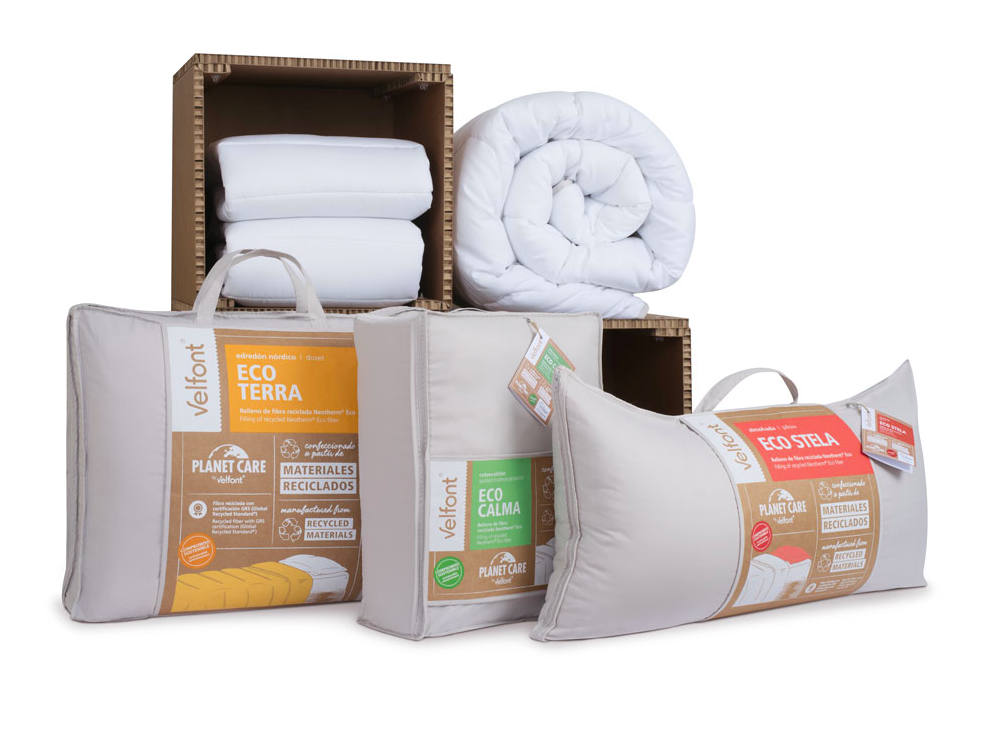
Planet Care Collection, made with recycled yarns by Spanish company Velfont.
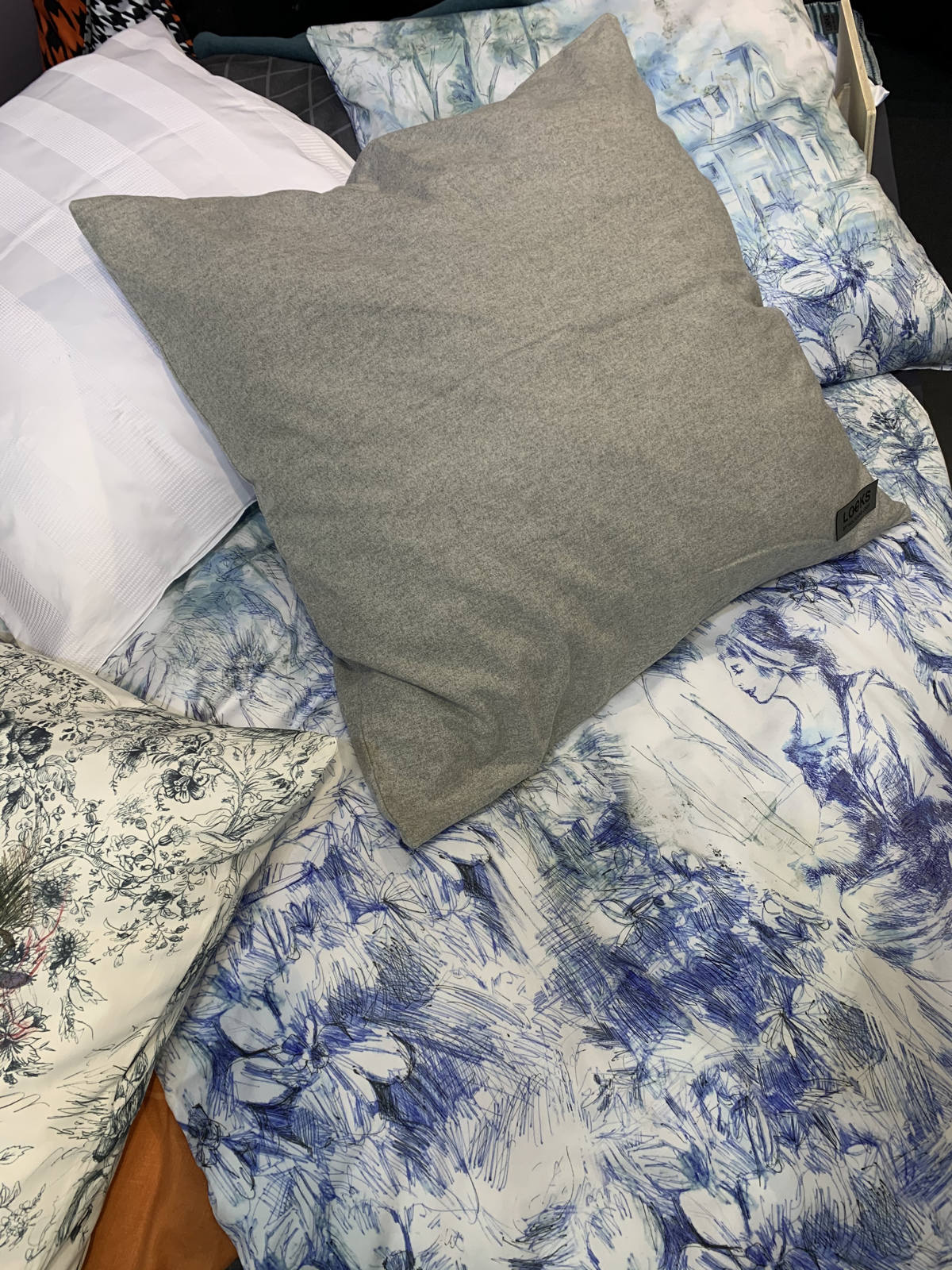
GOTs and Oexo-Tex Made in Green certified collection by Wolfang Joop.
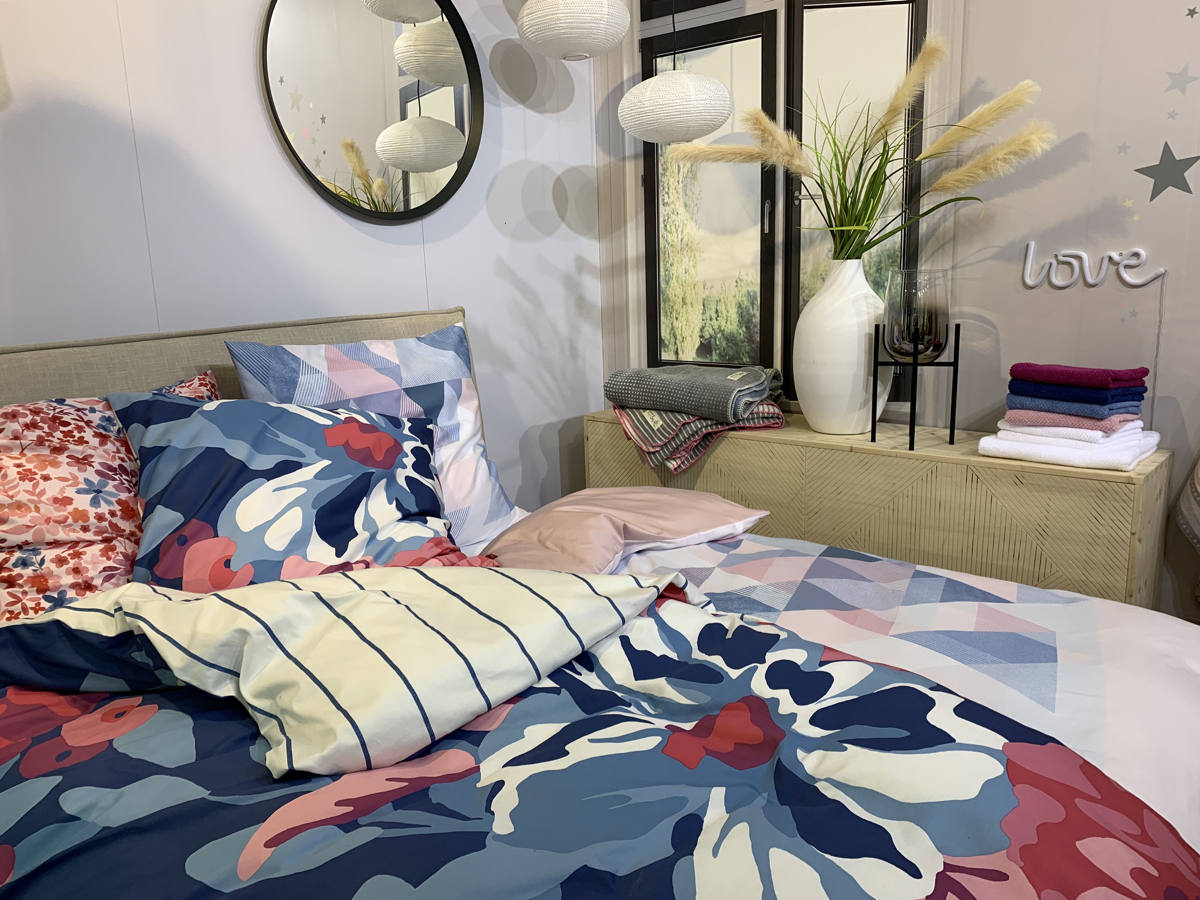
Made in Green by Oeko-Tex Certified collection by S. Oliver, also GOTs Certified.
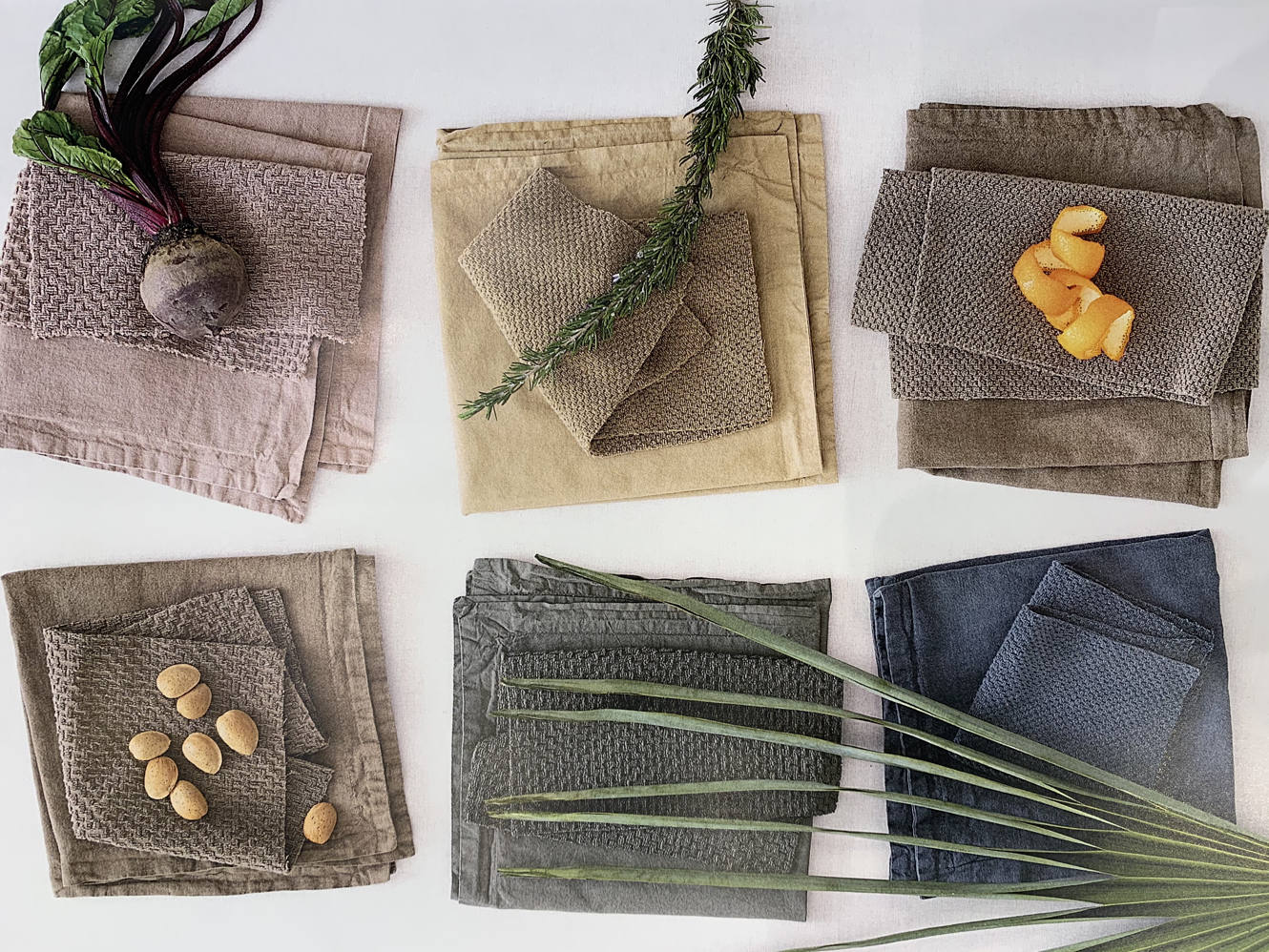
Natura Collection, 100% organic cotton, GOTs Certified. Natural dyed by Lasa.
Natural Assets
Many of the natural material son which we rely have been over-farmed and excessively cultivated for centurias, so resources that are abundant today may be scarce in the future. To Harvest sustainably, we need to be flexible and inventive, basing our manufacturing on what is currently and locally available. The mainstream textile industry has traditionally drawn heavily on natural resources, with catastrophic consequences in terms of pollution and over-explotation. Now, naturally resilient varieties and widely forgotten heritage fibres are coming to the fore as viable, sustainable alternatives. Natural Assets shows a series of projects that span both high-tech and tradicional techniques to unlock the hidden qualities of some of the world’s most abundant and bio-positive plant life.
- Sisal fibre, which is natural and biodegradable, was once one of the biggest industries in Maxico, providing employment for entire communities of the Yucatan peninsula, but is has been largely superseded by nylon. Mexican designer Fernando Laposse champions tradicional methods of harvesting and processing sisal, including the use of natural dyestuffs, as well as supporting the farmers who produce it.
- Hey Jute, by Alexander Marinus, highlight jute’s qualities and explore its full potencial. Jute fibres are strong and can grow up to five metres in length. Marinus, who was nomitated for a 2018 New Material Award, developed a needle felting technique that preserves this extraordinary length. He has produced a cushion which showcases jute fibres’ length and lustre, and a wall hanging that incorporates felted jute.
- Sea Me Collection, by Nienke Hoogvliet, started with handmade rug made of seaweed yarn knotted into a discarded fishing net. Unlike cultivated textile crops such as cotton, seaweed is naturally abundant, makes a positive contribution to the ecosistema, ans simply needs to be responsibly harvested. Hoogvliet has added a chair and a table to the Sea Me Collection, using seaweed not only as a yarn but also as a natural dyestuff, and repurposing leftover material into paint and bioplastic bowls, resulting in zero waste.
- Bananatex, developed by Qwstion, is durable, waterproof and fully biodegradable. Derived entirely from sustainably cultivated Abacá banana plants, which are particulary sturdy and require no pesticidas or extra water to thrive, fibres extracted from the plant stalks are converted into yarn and woven into cloth, which is then coated with naturally water-repellent beeswax. In the Philippines, where the banana plants are Brown, the plantations help reforesta reas eroded by intensive palm cultivation, and provide income for local farmers.
- Palmleather, by Tjeerd Veenhoven, is an affordable and sustainable alternative to leather, plastic and rubber. The leaves of the areca palm, also known as the betel tree, which is common across Asia, are brittle in their natural state. Dutch designer Tjeerd Veenhoven has developed a glycerine-based biological softening solution that makes the leaves into a flexible, aesthetically appealing material that looks a lot like leather. Palmleather can be used to make products such as furniture, book bindings, bags and shoes.
- Bark cloth, made from the bark of the East African mutuba fig tree, is one of the most ancient textiles known to man and its artisanal production, mostly carried out by small-scale organic farmers in Uganda, is Unesco-listed. Mutuba bark can be harvested every year without harming the tree, making the cloth infinitely sustainable. Its processing requires very little water and no synthetic binders or dyes, and its forms range from supple and leather-like to delicate and fleecy. Barktex’s No Buffalo vegan surface materials is 99% biobased and can be used as a wall covering, a furniture surface and in the production of fashion accesories.
- Hemp Fibre Panels produced at Margent Farm are a strong and durable natural alternative to materials such as corrugated steel, PVC, bitumen and cement. Made of hemp fibre bound with sugar-based resin made from agricultural waste such as corn cobs and oat hulls, the panels can be used externally afor rainproofing, or internally to line ceilings and walls. Hemp matures quickly, requires little or no extra water and doesn’t need pesticide applications. It also actively benefits the enviroment by capturing carbon dioxide as it grows and converting it to biomass, while its long tap roots break up compacted soil and prepare the ground for the next crop.
- Nettles are resilient, low-maintenance and Spreads easily – so easily that they’re often regarded as weeds. They even grow well on steep slopes that aren’t suitable for arable culture, which is where Kenyan company Green-Nettle Textile harvests luxurious eco-fabric. The fabric, which is similar to linen, is dyed with natural plant dyes. Green-Nettle Textile won a 2019 Global Change Award and its founders say the Project Could scale to create income for as many as 200,000 smallholders in Kenya. The nettle crops prevente soil erosion and promote biodiversity, require little water, and the plants’ leaves can be processed into organic fertiliser – or even eaten.


